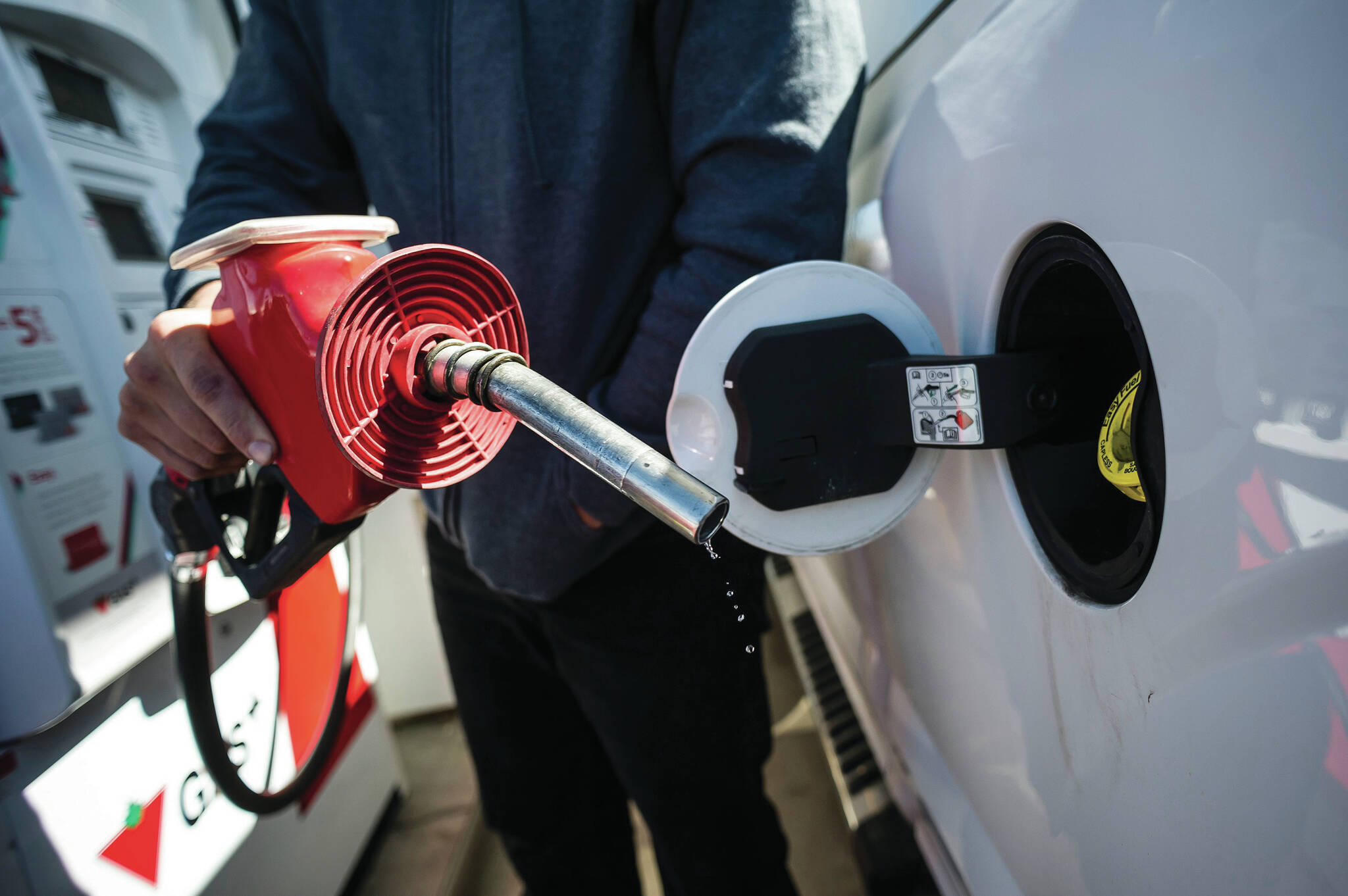Many people are experiencing fuel price shock at the moment — though the impact on you will depend on your vehicle, the length of your commute and many other factors.
But there are some things to keep in mind on a day-to-day basis which may help you reduce the pressure on your budget and the pain at the pumps.
1) Short trips are for walking or biking (or transit if available)
Okay, not everyone or every situation allows for walking or biking, but lots do. Not only will it save you money at the pumps, but leaving the car parked for short errands and in between stores means you give yourself some fresh air and exercise as well.
2) Accelerate slowly
Sure, you always wanted to be a race car driver, but really, beating a stranger from one stop light to the next won’t get you ahead in life. It also won’t get you ahead in fuel savings. The Government of Canada website suggests imagining you have a cup of coffee on the dashboard, and you try not to spill it. Slow and steady really does win the race to savings in this case.
2) Skip the drive-through
We know the drive-through is a North American staple, but you can save yourself some serious bucks if you skip those long lines of vehicles idling away, turn your vehicle off for those 10 minutes and walk in to make your order. COVID made North Americans even more fond of the drive-through, but walking in for the daily coffee would help support your caffeine and sugar habit.
3) Give yourself space and watch for what’s coming
Close following distances are good for creating a pain in the rear end, if you catch my drift, and they also require faster deceleration, which is less efficient. So give other vehicles some space, it will help you keep your speed consistent.
4) Speed limits are good for you
Minding the speed limit will save you money in speeding tickets, but did you know that fuel efficiencies are usually highest in the speed-limit friendly range of 50 to 80 km/h? At speeds above 80 km/h, fuel efficiency can drop quickly. The Government of Canada website notes that at 120 km/h, a vehicle uses approximately 20 per cent more fuel.
5) Coast if you can — to decelerate
While we’re not suggesting you go back to the old manual transmission days and try to put your vehicle in neutral to go down hill, it does pay to let your foot off the gas and wait to hit the brake, which also takes you back to the giving yourself space from the traffic around you.
READ MORE: Funding helps promote electric vehicle uptake in B.C.
6) Tires matter
Fuel efficiency can be greatly impacted by your tires. Heavier treads, under-inflated tires and other factors can change your fuel efficiency – and the effects add up. Swap your tires for the season, buy tires that do more than look good and check your pressure.
7) Avoid idling
Funny that this one has to be mentioned, but just yesterday, walking down the main street, a pickup truck was idling with no one inside. Guess that person had money to burn… (see also Tip No. 2)
8) Lose some weight …
… in your vehicle! How often do you let stuff build up in the trunk or cargo area? Things like recycling, sports equipment, and other unnecessary and sometimes heavy items actually add to how much fuel your vehicle will need to burn. It takes more fuel to move a larger load. This includes bike racks and can also be why a smaller vehicle as a better option for day-to-day use.
9) There’s power in numbers — combine trips
If you have to drive to work, then try to pick up groceries on your way home and save yourself a later trip to the store. Vehicles are usually more fuel efficient once they’re warmed up, so if you do two or three errands at a time with a warm vehicle, they’ll be that much more efficient.
10) Carpool if you can
It’s not always possible, and while it might take some adjustment, just imagine if your weekly commute’s fuel bill was cut to half what it is now. That is what would happen if you and a coworker carpooled. That’s a far bigger savings than the most recent increase in fuel costs.
These are just the tip of the iceberg, many more options are available to reduce your fuel consumption, and as a result, reduce your spending at the pumps.
If you’re interested in new or used vehicles, be sure to visit TodaysDrive.com to find your dream car today! Like us on Facebook and follow us on Instagram

